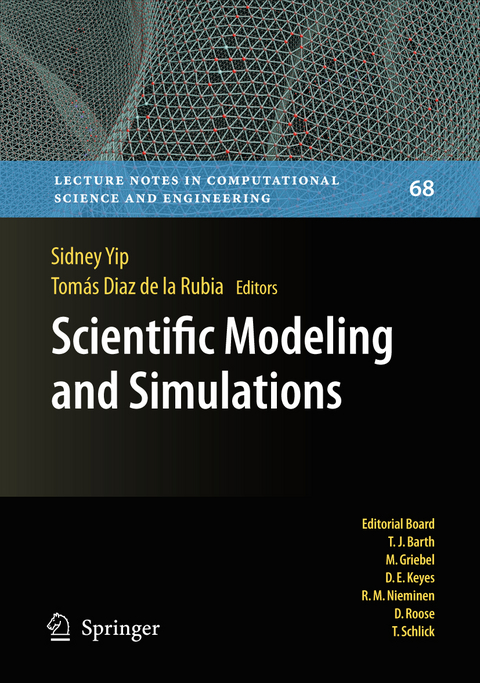
Scientific Modeling and Simulations
Springer (Verlag)
978-90-481-8197-1 (ISBN)
Scientific Modeling and Simulations.- A retrospective on the journal of computer-aided materials design (JCAD), 1993–2007.- Extrapolative procedures in modelling and simulations: the role of instabilities.- Characteristic quantities and dimensional analysis.- Accuracy of models.- Multiscale simulations of complex systems: computation meets reality.- Chemomechanics of complex materials: challenges and opportunities in predictive kinetic timescales.- Tight-binding Hamiltonian from first-principles calculations.- Atomistic simulation studies of complex carbon and silicon systems using environment-dependent tight-binding potentials.- First-principles modeling of lattice defects: advancing our insight into the structure-properties relationship of ice.- Direct comparison between experiments and computations at the atomic length scale: a case study of graphene.- Shocked materials at the intersection of experiment and simulation.- Calculations of free energy barriers for local mechanisms of hydrogen diffusion in alanates.- Concurrent design of hierarchical materials and structures.- Enthalpy landscapes and the glass transition.- Advanced modulation formats for fiber optic communication systems.- Computational challenges in the search for and production of hydrocarbons.- Microscopic mechanics of biomolecules in living cells.- Enveloped viruses understood via multiscale simulation: computer-aided vaccine design.- Computational modeling of brain tumors: discrete, continuum or hybrid?.
| Erscheint lt. Verlag | 21.10.2010 |
|---|---|
| Reihe/Serie | Lecture Notes in Computational Science and Engineering ; 68 |
| Zusatzinfo | VI, 402 p. |
| Verlagsort | Dordrecht |
| Sprache | englisch |
| Themenwelt | Informatik ► Grafik / Design ► Digitale Bildverarbeitung |
| Mathematik / Informatik ► Informatik ► Theorie / Studium | |
| Mathematik / Informatik ► Mathematik ► Angewandte Mathematik | |
| Naturwissenschaften ► Chemie ► Physikalische Chemie | |
| Naturwissenschaften ► Physik / Astronomie ► Allgemeines / Lexika | |
| Naturwissenschaften ► Physik / Astronomie ► Theoretische Physik | |
| ISBN-10 | 90-481-8197-6 / 9048181976 |
| ISBN-13 | 978-90-481-8197-1 / 9789048181971 |
| Zustand | Neuware |
| Haben Sie eine Frage zum Produkt? |
aus dem Bereich


